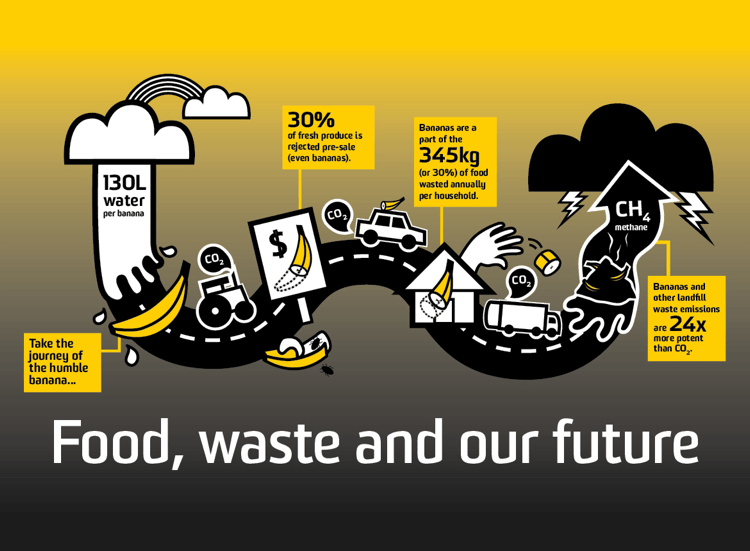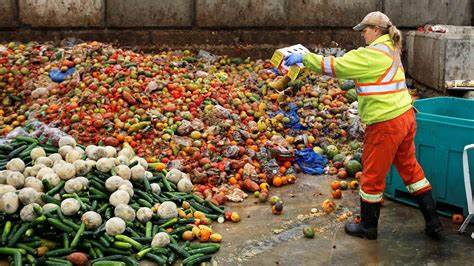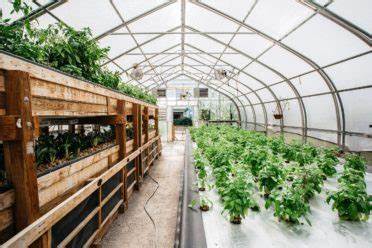
Vertical Farming: Navigating the Challenges of Food Waste
Introduction
Vertical farming is an innovative approach to agriculture that involves cultivating crops in vertically stacked layers, using techniques such as hydroponics, aeroponics, and aquaponics. By utilizing vertical space and advanced technologies, vertical farming aims to address the challenges of traditional farming, including land limitations, water scarcity, and weather dependency. In addition to increasing food production, vertical farming also holds great potential in reducing food waste. This article explores the challenges of food waste and how vertical farming can contribute to its reduction.
Historical Background
Vertical farming has its roots in the early 20th century, with the concept of “skyscraper farms” proposed by American geographer Gilbert Ellis Bailey. However, it wasn’t until the 1990s that the idea gained significant attention, driven by concerns about food security and sustainability. Over the years, vertical farming techniques and technologies have evolved, incorporating advancements in lighting, irrigation, and automation. Today, vertical farms can be found in urban areas worldwide, providing fresh produce year-round.
Key Concepts and Definitions
Vertical farming
Vertical farming refers to the practice of growing crops in vertically stacked layers, often in controlled environments such as indoor facilities or greenhouses. This approach maximizes space utilization and allows for precise control over environmental factors, such as temperature, humidity, and lighting.
Food waste
Food waste refers to the loss or disposal of food, either at the pre-consumer (e.g., during production and distribution) or post-consumer (e.g., by households and restaurants) stages. This includes both edible and inedible parts of food. Food waste not only represents a significant economic loss but also has substantial environmental impacts, including greenhouse gas emissions and the wasteful use of land, water, and energy resources.

Main Discussion Points
Vertical farming as a solution to food waste
Vertical farming offers several advantages in reducing food waste. Firstly, by cultivating crops close to urban areas, vertical farms can minimize transportation distances, reducing the likelihood of spoilage and damage during transit. Additionally, vertical farming allows for year-round production, reducing seasonal fluctuations and the need for long-term storage. Furthermore, the controlled environment of vertical farms enables optimal growing conditions, minimizing crop losses due to pests, diseases, and extreme weather events.
Challenges in implementing vertical farming to address food waste
Technological challenges
While vertical farming holds great promise, several technological challenges must be overcome. Lighting is a critical aspect, as plants require adequate light for photosynthesis. Advances in LED lighting have significantly improved energy efficiency and light spectrum control in vertical farming. However, the high initial cost of LED systems remains a barrier to widespread adoption. Energy consumption is another concern, as vertical farms rely on artificial lighting and climate control systems. Finding sustainable energy sources and optimizing energy usage are ongoing challenges. Additionally, pest control in indoor environments can be more challenging than in traditional farming, requiring innovative solutions to ensure crop health and productivity.
Economic challenges
The economic viability of vertical farming compared to traditional agricultural practices is still a topic of debate. While vertical farming can provide higher yields in smaller spaces, the initial investment and operational costs can be significant. For vertical farms to compete with conventional agriculture, further advancements are needed to reduce production costs and improve economies of scale. Scaling up and commercializing vertical farming operations also face challenges, including market acceptance and access to affordable financing options.
Policy and regulatory challenges
The legal and regulatory framework surrounding vertical farming and food waste management varies across jurisdictions, posing challenges for widespread adoption. Zoning regulations, building codes, and permits can restrict the establishment of vertical farms in urban areas. Additionally, food safety regulations and certification requirements may need to be tailored to the unique characteristics of vertical farming. Policymakers need to collaborate with industry stakeholders to develop supportive policies and address potential barriers while also leveraging vertical farming as a tool in sustainable urban development and food security initiatives.

Case Studies or Examples
Real-world examples of successful vertical farming projects that have effectively reduced food waste exist. For instance, Gotham Greens operates rooftop greenhouses in urban areas, supplying fresh produce to local markets. By eliminating long-distance transportation and seasonality issues, Gotham Greens minimizes food waste and carbon emissions. Another example is AeroFarms, which uses aeroponics to grow leafy greens in vertical towers. AeroFarms’ indoor vertical farms have achieved impressive yields and reduced water usage compared to traditional farming.
Current Trends or Developments
Recent trends and developments in vertical farming technology and practices are driving further advancements in food waste reduction. Advances in automation and robotics have enabled more efficient and precise cultivation techniques. Integration of artificial intelligence and machine learning algorithms allows for real-time monitoring and optimization of crop growth parameters. Additionally, research is exploring ways to utilize organic waste streams as inputs for vertical farming systems, closing the loop in the food production and waste management cycle.
Challenges or Controversies
Controversies and differing viewpoints surround the effectiveness of vertical farming in reducing food waste. Critics argue that the high energy consumption of indoor farming systems offsets the benefits in terms of food waste reduction. They also question the scalability and affordability of vertical farming, particularly in low-income communities. Gaining consumer acceptance and market adoption of vertical farming products can also present challenges, as some consumers may be hesitant to embrace produce grown in unconventional environments.

Future Outlook
The future of vertical farming and food waste reduction looks promising. Continuous technological advancements are expected to drive down costs and improve energy efficiency in vertical farming systems. Increasing collaboration between researchers, policymakers, and industry stakeholders will facilitate the development of supportive policies and regulations. Furthermore, consumer education and awareness campaigns can play a crucial role in promoting the benefits of vertical farming and encouraging sustainable food choices.
Conclusion
Vertical farming offers a sustainable solution to address the challenges of food waste. By optimizing resource utilization, reducing transportation distances, and ensuring year-round production, vertical farming can significantly contribute to reducing food waste. However, overcoming technological, economic, and policy challenges is essential to fully realize the potential of vertical farming. Continued research, innovation, and collaboration are necessary to create a future where vertical farming plays a central role in securing food supplies and promoting environmental sustainability.
References
Smith, M. (2020). Vertical farming: Feeding the future. National Geographic.
Despommier, D. (2010). The rise of vertical farms. Scientific American.
Qamar, M. K., et al. (2021). Vertical farming: A sustainable food production system for the future. Sustainability, 13(3), 1131.
Fisher, M. R., et al. (2015). Vertical farming: A review of approaches and challenges. Agronomy for Sustainable Development, 35(1), 483-498.




